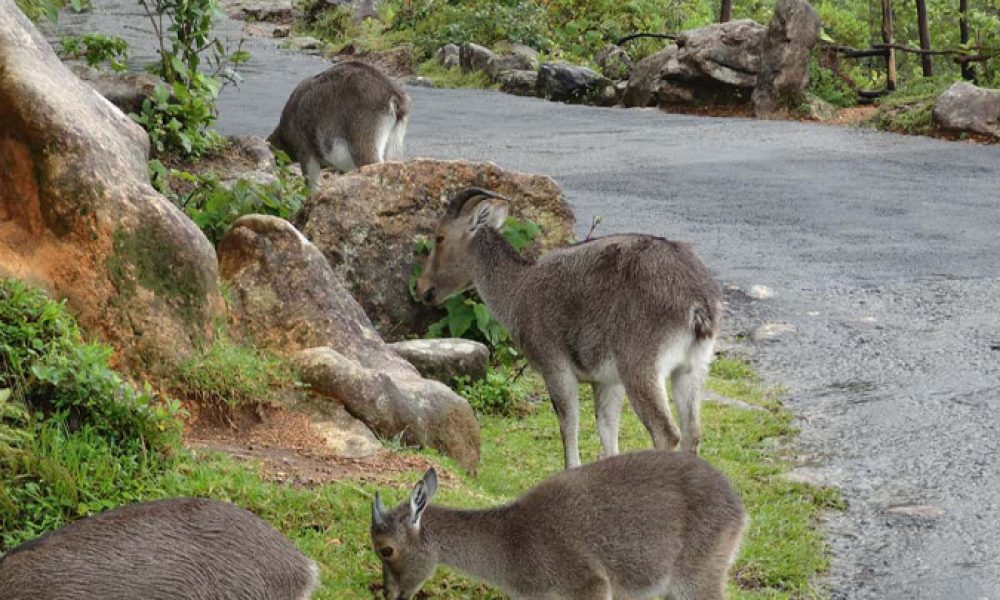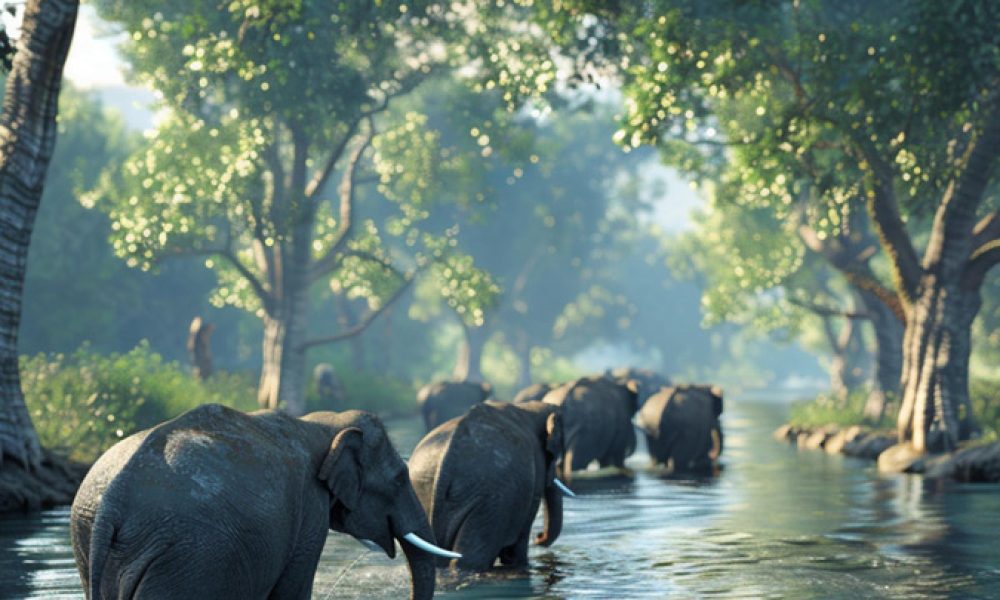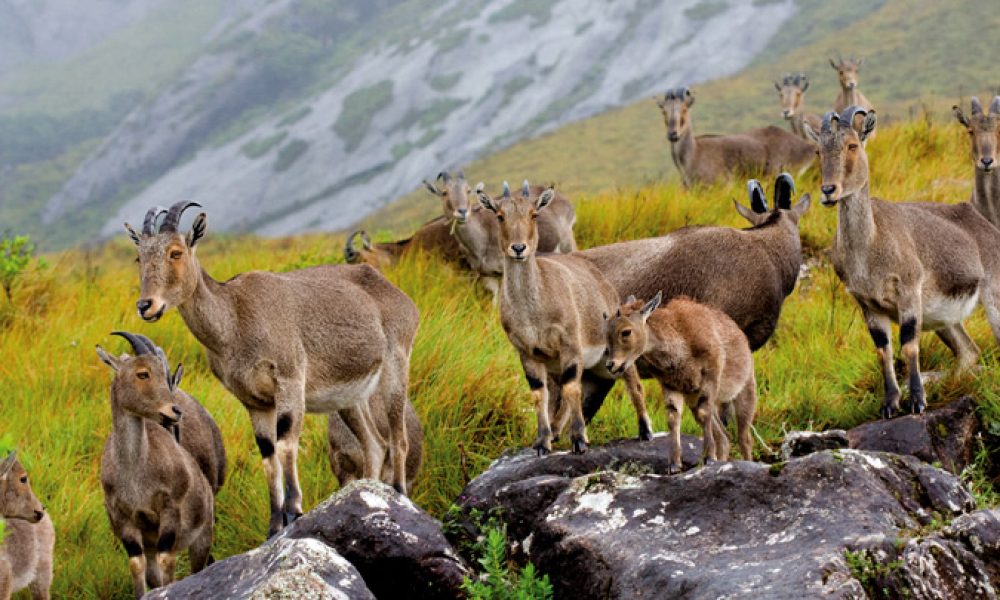Eravikulam National Park, tucked away in Kerala’s Western Ghats, is a pure paradise of biodiversity and scenic splendor. This 97 square kilometer national park is the crown jewel of Kerala’s ecotourism, providing tourists with an unparalleled chance to witness the abundant flora and fauna of the area. Eravikulam National Park, well-known for its shola trees, undulating grasslands, and the recognizable Nilgiri Tahr, need to be on the travel agenda of anybody who enjoys the outdoors. Everything you need to know about Eravikulam National Park will be covered in this extensive guide, including its significance and history, the ideal time to visit, and what to anticipate when you arrive there.

A Brief History of Eravikulam National Park
The main objective of the 1978 establishment of Eravikulam National Park was to protect the critically endangered Nilgiri Tahr, a type of mountain goat indigenous to the Western Ghats. The region was a British Raj game reserve prior to being named a national park. The establishment of the park was a major step in protecting the area’s distinctive biodiversity, especially the shola forests and grasslands that are typical of the Western Ghats’ high altitudes.
As a component of the Western Ghats, the park’s classification as a UNESCO World Heritage Site highlights its significance even more. This acknowledgement emphasizes Eravikulam’s importance on a global scale as a hotspot for biodiversity and a vital region for conservation.
The Unique Ecosystem of Eravikulam National Park
The geography of Eravikulam National Park, which is situated in Kerala’s Idukki district, is a mixture of undulating grasslands and isolated shola forests. The highest peak in South India, Anamudi Peak, is 2,695 meters above sea level, and its summit lies at an elevation of 1,200 meters in the park.
Flora
The montane grasses that dominate the park’s higher elevations and the shola trees that grow in the valleys and depressions are key components of its distinctive ecosystem. Numerous endemic plant species, many of which are unique to the Western Ghats, can be found in these grasslands. Conversely, the deep, evergreen shola forests provide as a haven for a diverse array of flora and fauna.
The Neelakurinji (Strobilanthes kunthiana), a shrub that blooms once every 12 years and covers the hillsides in an amazing carpet of blue flowers, is one of the most notable plant species in Eravikulam. Since the next blooming season is a unique natural phenomena that attracts travelers from all over the world, both locals and tourists eagerly await it.
Fauna
The most well-known resident of Eravikulam National Park is the Nilgiri Tahr, among other different species. The park’s emblematic species, mountain goats are an endangered species, and conservation efforts have mostly been successful in maintaining and growing their numbers. One of the greatest locations to witness these magnificent animals in their native environment is the park, which is thought to be home to approximately 800 Nilgiri Tahr.
In addition to the Nilgiri Tahr, other mammals found in the park include sambar deer, leopards, Indian muntjacs, and the secretive Nilgiri marten. With over 130 different species of birds identified in the park, birdwatchers will be happy to learn that Eravikulam is a sanctuary for birdlife. Several of the noteworthy species

Exploring Eravikulam National Park
A trip to Eravikulam National Park provides a range of experiences and activities that let guests fully appreciate the area’s natural splendor.
Trekking and Hiking
Trekking is one of the most well-liked activities in Eravikulam. Trekking trails in the park range in difficulty, so hikers of all skill levels can find something to suit their needs. The path that leads to Anamudi Peak is the most well-known. The hike to the summit of Anamudi, South India’s tallest peak at 2,695 meters, rewards hikers with breathtaking views of the surrounding terrain. The hike is usually completed in 6 to 8 hours, and it is moderately difficult.
The Rajamala area of the park provides simpler paths with equally stunning vistas of the rolling grasslands and valleys for those seeking a less taxing experience. The Nilgiri Tahr is also easiest to see in Rajamala, where they are frequently
Wildlife Viewing
Eravikulam National Park is a wildlife enthusiast’s heaven. While the Nilgiri Tahr is the primary attraction, tourists may also come across other creatures like sambar deer, Indian muntjacs, and occasionally leopards thanks to the park’s complex habitat. The park boasts an equally remarkable birdlife, with numerous species indigenous to the Western Ghats.
There are opportunities for tourists to explore the park’s wildlife-rich sections with the assistance of knowledgeable naturalists through guided safaris and nature walks. These guided excursions are highly recommended since they provide insightful information about the ecosystem of the park and the behavior of its visitors.
The Neelakurinji Bloom
The blooming of Neelakurinji flowers is one of the most remarkable natural occurrences that takes place in Eravikulam National Park. Every twelve years, the Neelakurinji shrubs bloom in tandem, transforming the entire landscape into a sea of blue. This phenomena is unique to India. The next bloom is anticipated to occur in 2030; the previous one happened in 2018. For those who enjoy the outdoors, the festival is a once-in-a-lifetime opportunity, drawing thousands of attendees.
Best Time to Visit Eravikulam National Park
Eravikulam National Park is best visited between September and March. The weather is nice and cool during this time of year, which is perfect for hiking and seeing wildlife. It is advisable to avoid the monsoon season, which runs from June to August, as the intense rains can make trekking challenging and cause access to some park regions to be restricted.
If you want to see the Neelakurinji bloom, you have to schedule your visit for the year when the bloom takes place. But the park offers a wealth of year-round wildlife viewing and natural splendor even without the bloom.
How to Reach Eravikulam National Park
The well-known Keralan hill resort of Munnar is about 15 kilometers away from Eravikulam National Park. Cochin International Airport, located roughly 130 kilometers away, is the closest airport. You can take a bus or rent a taxi to go to Munnar from the airport. You may get to the park in Munnar using the local busses and taxis.
The journey to Eravikulam provides breathtaking views of the tea plantations, undulating hills, and misted valleys that are Munnar’s hallmark. The park is well-connected by road.

Conservation Efforts at Eravikulam National Park
In addition to being a popular tourist destination, Eravikulam National Park is an important site for conservation. The management of the park has put in place a number of safeguards to preserve both the species that live there and its distinct ecology. These initiatives consist of community participation initiatives, anti-poaching patrols, and habitat restoration.
In order to encourage environmentally conscious travel and sustainable tourism, park officials collaborate closely with nearby communities. The Nilgiri Tahr and other endangered species in the park have been successfully conserved thanks in large part to this cooperative approach.
Conclusion
With its abundance of species and natural beauty, Eravikulam National Park provides visitors with a singular chance to discover the beauties of the Western Ghats. With its magnificent Nilgiri Tahr and unique Neelakurinji bloom, the park is a symbol of Kerala’s abundant natural history.
Eravikulam National Park offers something for everyone, whether they are passionate hikers, wildlife watchers, or just want to get away from it all. You’ll see why the park is one of India’s most treasured natural reserves as you explore its towering peaks, thick shola trees, and undulating meadows. Prepare for an incredible journey into Kerala’s wilderness by packing your baggage and putting on your hiking boots.